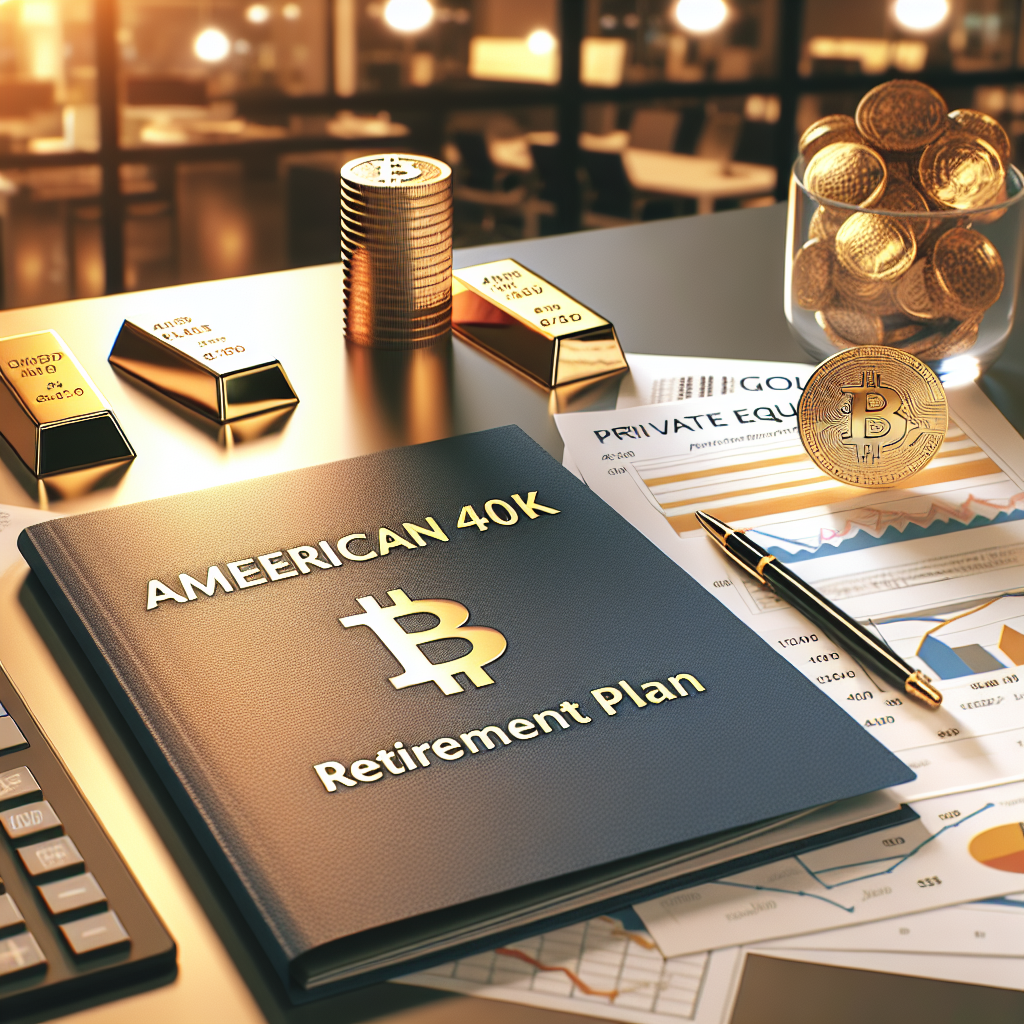White House Approves 401(k) Investments in Bitcoin and Gold
Major Policy Shift Opens Doors to Alternative Assets
In a groundbreaking move that could reshape retirement investing, the White House has officially endorsed the inclusion of Bitcoin, gold, and private equity investments in 401(k) retirement plans. This policy shift aligns with a broader trend of embracing alternative assets, offering new avenues for Americans seeking to diversify their retirement portfolios.
The announcement comes amid growing interest in decentralized and non-traditional investment tools, as investors look beyond stocks and bonds to hedge against inflation and market volatility. With digital currencies like Bitcoin gaining mainstream traction, this move reflects a significant evolution in U.S. retirement savings policy.
What This Means for Retirement Savers
The White House’s green light opens the door for millions of Americans to include high-growth and inflation-resistant assets like Bitcoin and gold in their retirement portfolios. This comes at a critical time when traditional 401(k) plans, heavily weighted in stock market indexes, have faced criticism for exposing savers to market shocks and limited diversity.
By adding more investment categories, savers could benefit from:
- Greater diversification to reduce risk exposure
- Inflation hedging with assets like gold and Bitcoin
- Access to high-growth alternatives not previously available in traditional retirement plans
Support from the Department of Labor
The U.S. Department of Labor (DOL), which oversees discretionary contributions within employer-sponsored 401(k) plans, had previously discouraged the inclusion of digital assets like Bitcoin due to their volatility and regulatory uncertainty. However, that stance is now changing in response to public demand and market maturity.
Marty Walsh, Secretary of Labor, noted that Americans should have more freedom in choosing how to invest their retirement funds. The shift in policy suggests that the federal government is willing to explore innovative financial tools while still providing investor protections.
Fiduciary Responsibilities Still Apply
While the new policy increases freedom in investment choice, it also reinforces the fiduciary duties of plan sponsors. Employers and fund managers must still conduct due diligence to ensure that offering these alternative assets fits the best interest of the plan participants.
In practical terms, this means plan managers must:
- Assess the risk and volatility of digital and alternative assets
- Guarantee transparency and accountability in fund performance
- Provide clear disclosures for participants about the potential risks and rewards
Fidelity and Other Fund Managers Respond
Following the policy update, notable asset management firms like Fidelity Investments have already responded by rolling out options that include Bitcoin within 401(k) accounts. Fidelity, one of the largest 401(k) managers in the U.S., announced its plans to allow individuals to allocate up to 20% of their 401(k) savings to Bitcoin through their platform.
Dave Gray, head of workplace retirement offerings at Fidelity, remarked: “There is growing interest from plan sponsors in vehicles that allow Americans to diversify into digital assets for their retirement savings.”
This rapid adoption by large financial institutions indicates a strong confidence in the future role of cryptocurrencies in long-term wealth management.
Investor Reactions and Market Impact
The decision to include Bitcoin and gold in retirement portfolios is being met with enthusiasm from both retail and institutional investors. With cryptocurrency markets becoming increasingly integrated into global financial systems, this move signifies a shift in perception—from speculative to strategic asset.
Market analysts predict that:
- This policy could inject billions of dollars into the crypto and precious metals markets
- The inclusion of these assets will increase overall 401(k) participation rates among younger investors
- The demand for crypto-compliant financial services will rise significantly
Volatility Remains a Double-Edged Sword
While the move is bold, it doesn’t come without concerns. Cryptocurrency markets remain highly volatile, and many financial experts warn that Bitcoin’s price swings could result in unexpected losses for unprepared savers. Therefore, it’s essential that investors assess their personal risk tolerances before reallocating funds.
Key risks include:
- Regulatory uncertainty in the U.S. and abroad
- Security vulnerabilities such as wallet hacks
- Market manipulation and liquidity concerns
To mitigate these risks, financial advisors strongly recommend using professional fund managers or target-date funds that include crypto exposure but maintain a diversified asset mix.
What Does This Mean for the Future of Retirement Planning?
The decision to legalize Bitcoin and gold in 401(k) plans reflects a generational shift in investment thinking. Traditional models of retirement planning, which emphasized long-term stock and bond positions, are increasingly being challenged by innovative approaches that incorporate digital assets, alternative markets, and self-directed investing.
Future implications of this policy shift include:
- More widespread education on blockchain and crypto investing
- Increased competition among retirement plan providers
- Development of new financial products tailored to diversified retirement needs
Advice for Investors Going Forward
If you’re considering diversifying your 401(k), here are a few tips to guide your decision-making:
- Consult a financial advisor with experience in alternative assets
- Start with small allocations—especially in volatile assets like Bitcoin
- Stay informed on regulatory changes affecting crypto and retirement policies
- Review your portfolio quarterly to assess performance and rebalance as needed
Final Thoughts
The White House’s endorsement of Bitcoin and gold investments in 401(k) plans marks a turning point in U.S. financial policy. By legitimizing alternative assets, the government is not only responding to market demand but also acknowledging the changing landscape of global finance.
While the opportunity for higher returns and inflation protection is attractive, investors must proceed with caution. As with any financial tool, knowledge and strategic planning are key to unlocking potential gains while minimizing risks.
As retirement investing enters a more decentralized and diversified era, Americans now have the tools and policy support to rethink how they build long-term wealth—from Wall Street to the blockchain.
